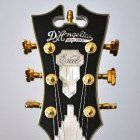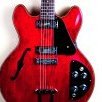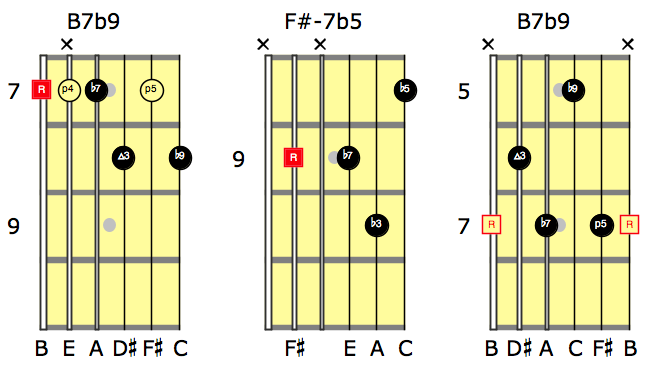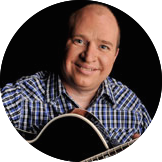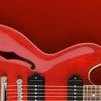Leaderboard
Popular Content
Showing content with the highest reputation on 01/16/2018 in all areas
-
In the old forum I posted my NGD for my new ES-339. In the post I explained that my wife bought me an ES-335 Studio for Christmas and totally surprised me. She even hid it over at my parents house so I wouldn't know that she bought it. I pretty much thought that Christmas was over and she brought it out. A TOTAL surprise! The only problem is that I already have an ES-335. There was the ES-339 at the local Guitar Center that I had my eye on. I asked her if it was OK to trade in the ES-335 and get the ES-339 and she told me that whatever I wanted to do was fine. I played the ES-335 for a day and really liked it, but there was that ES-339 on the wall at Guitar Center. I took her with me the day after Christmas to show her the ES-339 and she thought it was an awesome guitar too. I guess the biggest factor in my decision to trade in the ES-335 was that it was used and missing the Certificate of Authenticity. So back it went. I really like the ES-339 and played it for a couple of weeks. I just kept thinking about that darn ES-335. My wife has never actually bought me a guitar before. She's been there almost every time I purchased one, but never gone out on her own and purchased a guitar. I was feeling the guilt. I was actually at Guitar Center talking to one of the employees I know (which is most of them) and I mentioned that I would love to have that guitar if it had the Certificate of Authenticity. He told me he would see what he could do. It hung on the wall for a couple of weeks and I kept dropping by and asking about the Certificate. The Guitar Center employee kept saying that he was too busy and he would see if he could track it down when he got a chance. I learned later that someone came in and played the ES-335 for about an hour and was close to buying it. That made him remember that he promised me he would check on the Certificate. Luckily for me, the guy didn't buy it and they were able to track down the Certificate. Short story long, here is my new-to-me 2016 ES-335 in Ginger Burst: A closeup: And the beautiful back too: It did have a problem with the bridge pickup. This was my first time working on a hollow body with no access plate and let me tell you - it sucks! I had to pull the pots through the F hole, work on them, and pull them back through. Not fun. It's working great now! Part of the reason I bought it back was that it sounded so good (and, you know, because my wife bought it for me)! Ben2 points
-
Hello all, I have found a free course on Udemy "Become a Better Singer: Vocal Training for All Skill Levels!" This is for anyone who wants to learn to sing or improve their singing course. I do not know how long it will be available for free so if you are interested get it soon. https://onlinecourses.ooo/?s=singing I have used a piano chords course by this instructor and it was absolutely excellent. If you want to use this coupon I suggest that you sign up to Udemy (joining is free) and sign in to your account. Open the link above in a new window and click on it (I have to click on it twice) and it should direct you to the Udemy course page. Have fun. Mandy1 point
-
@Triple-o When a particular chord form is impossible to finger, you have several options: Try an alternate fingering. Use an easier to finger inversion of the chord. Simplify the chord by omitting the root, 5th, an extension, or alteration. Use the basic 7th chord. Find a substitute chord. I’ve made a small example with Neck Diagrams application for better illustration. Looking at it from left to right, I assume the 1st form is the one you’re having trouble with. Some suggestions have been made by @Wim VD and @tjmeyers already. Let me add that the most important chord tones that define the chord quality are the guide tones, namely: the 3rd and 7th (in the case of a dominant chord those are the major third and minor seventh). Even this basic ‘shell’ chord can be used in the context of a progression, especially when you are accompanied by a band or jam track with bass and possibly keyboard. The second form (F#-7b5) and the third form (B7b9) played in the mid to upper register are the ones Steve had scribbled on the Autumn Leaves PDF he uploaded to the old forum some time ago. As you can see Steve’s B7b9 is a rootless one, but I’ve included the roots (not to be played) for reference. As an additional thought let me point out that jazzers think of chords in terms of four part structures that are placed on different string sets. A seventh chord with its four notes is the basis for transformation into an extended or altered chord. Then you can enhance it by doubling one of the notes, adding another one, taking one away, etc. I hope it helps.1 point
-
This is pretty cool! Thanks for posting it! All signed up and watched the first 2 videos1 point
-
1 point
-
1 point
-
Great thanks, just signed up. Even if all it does is stops me sounding like a busted vacuum cleaner then its going to be worth it1 point
-
1 point
-
by Steve Krenz [First appeared: November 21, 2013] If you are like me, you appreciate straight talk – especially when it comes to something that is important to you, like learning guitar. There are just way too many opinions, by too many people, and too little time to wade through them all to find the real information. So, here are a few things, from where I sit, that every learning guitarist should know. 1) Decide. Are you going to do this or not? Is learning guitar and playing music an important goal in your life? If it is ever going to be more than just a “wouldn’t it be great” and a “maybe some day” kind of a hope, then you need to get busy. Stop waiting for the perfect time to get started. It will never come. Inspiration is for amateurs. Decisions, goals, and actions are what get any job done. Decide, then start. 2) Don’t wait for free time, PLAN time to learn. Everyone’s busy. Waiting to practice until you have some free time is a recipe for finding yourself a week from today not having touched your instrument. Think about your daily schedule and decide where you can fit in a few moments to practice. Set this time aside and be faithful to it. 3) Consistency is more important than quantity of time. The old saying goes “only practice on days you eat.” The human mind learns best in regular, consistent, small doses. You’ll find you learn and retain more in 15 minutes a day for 5 days than a 3 hour “binge” practice session on the weekend. Don’t believe me? Try it and see. 4) When practicing, work and reach. Don’t fool yourself into thinking, “just because I have my guitar in my hands, I’m getting better.” Progressing in your learning comes from “reaching” – from doing things that you can’t do. It comes from struggling with a new task, fumbling around, making mistakes, eventually getting better at it, until slowly more successful attempts are made. If you’re not “reaching” and “struggling”, then you’re not progressing. 5) Never waste a good mistake. Learn from it. Don’t make a mistake and think “well, I just messed up.” If you make the same mistake more than once then stop and think about what happened. What specific musical task did you stumble over? Isolate it, and analyze it. Was it the change between two specific chords? Or, perhaps, you’re consistently overreaching to get a particular note? You’ll find that your mistakes are hardly ever random. They are very specific. Find what you stumble over, isolate it, practice it slowly until you can play it consistently correct, then put it back into context within the song. Be a student of your mistakes so that you can learn from them. 6) Record your progress - seeing the flower bloom. When you finally get that new exercise down make a short video of yourself playing it. Try to make one video a week. After three months, you’ll be able to clearly see the progress you are making. Recording yourself helps you measure your progress but it also helps you learn how to switch from “practice mode” to “performance mode” which is a vital skill. 7) Bring someone else along in your learning journey. It’s no fun learning alone. Involve someone else in your learning journey. Play your new song for your spouse, or friend. It’s not about them being “impressed” with your playing. It’s about having someone to help you be faithful to your commitment to learn. 8) Relax. It’s just guitar. Learning guitar shouldn’t be stressful. It’s a long road toward a very worthwhile and life-enriching end. Relax and enjoy the journey. You’ll learn a lot better. Keep up the great work! – Steve1 point
-
Here is the link to the Musicality Podcast... https://www.musical-u.com/learn/topic/podcast/1 point


